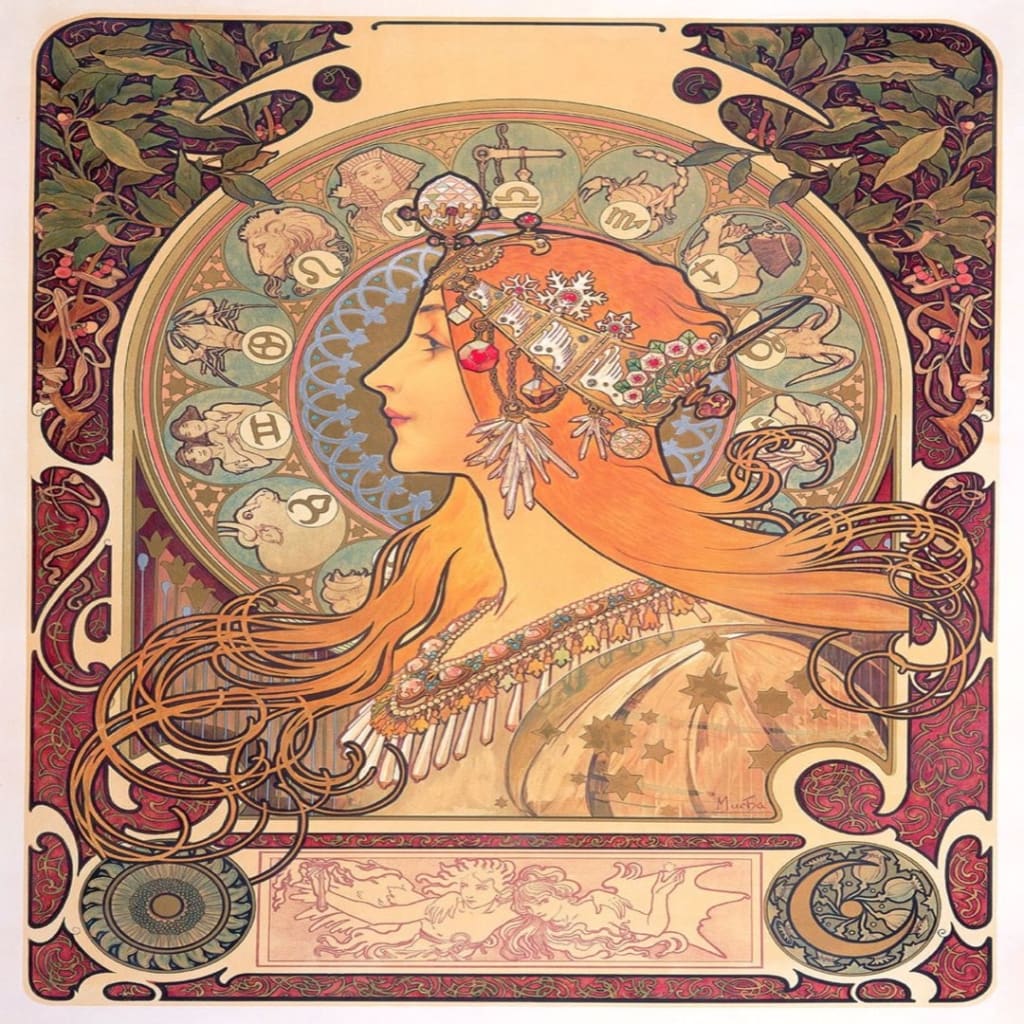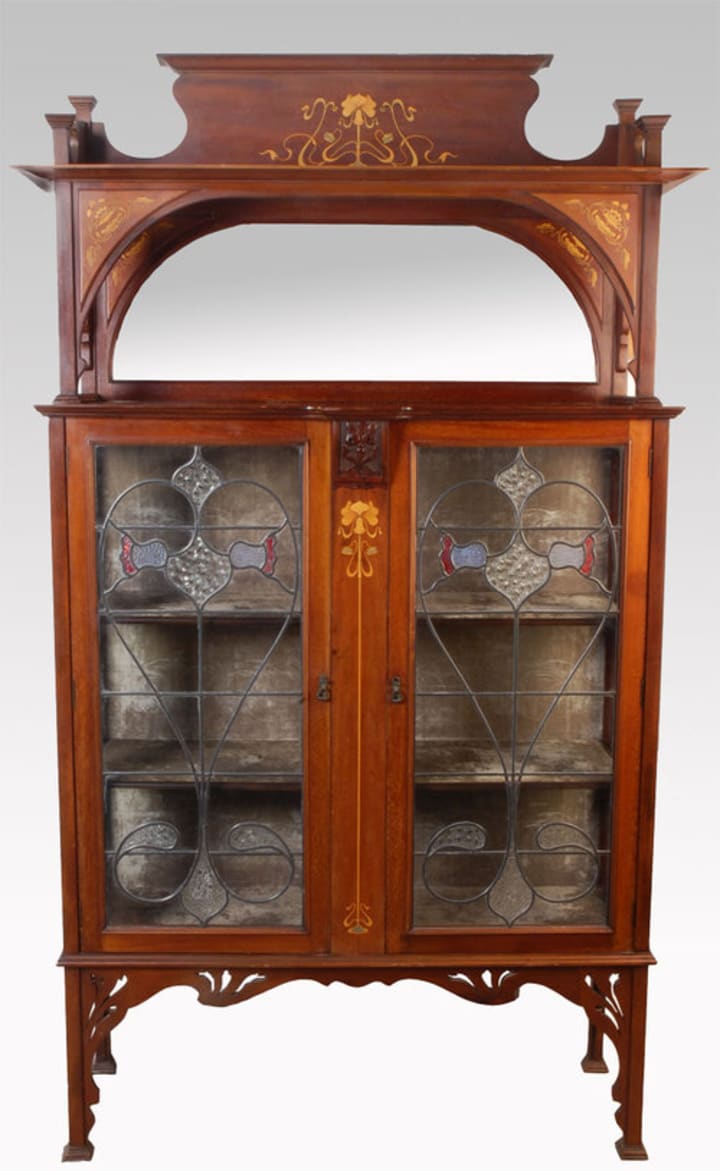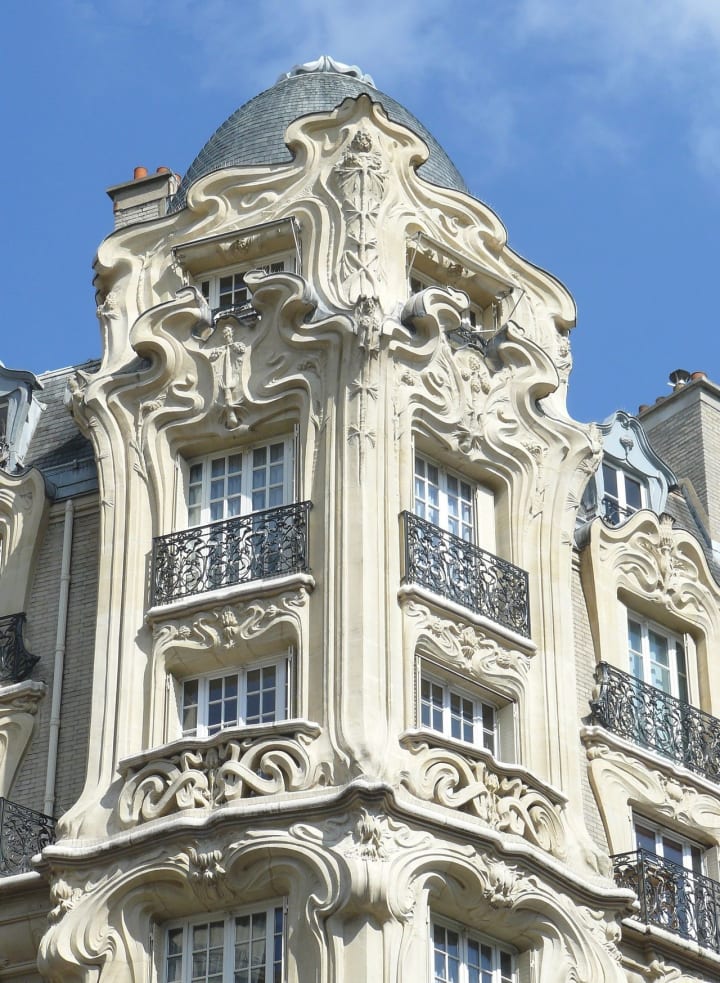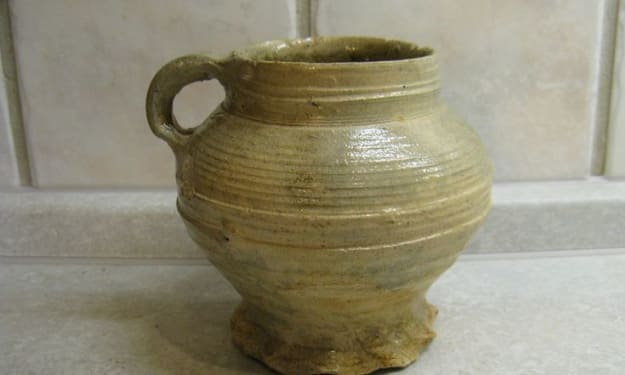Art Nouveau
A short-lived art movement that was surprisingly influential

Art Nouveau (French for “New Art”) was a movement that flourished at the end of the 19th century and the beginning of the 20th century. It was a conscious rejection of the accepted values of the time and sought to unite all the decorative arts, including architecture and interior design, in making a new stride forward.
Art Nouveau artists and designers stressed the use of organic, natural and geometrical motifs in stylized forms with an emphasis on line and sinuosity. Although Art Nouveau style was most apparent in the arts of architecture and the design of physical “objets d’art”, it was characterized by an essential two-dimensionality.
The inspiration for Art Nouveau came from several sources, included the passion for Japanese art that swept Western Europe in the late 19th century, Celtic and Gothic art, and even the engravings of William Blake.
The movement was essentially English in origin, although it later flowered in many parts of Europe where it combined with other movements such as Symbolism in France. The later pre-Raphaelites, with their interest in medievalism and Gothic forms, were precursors of Art Nouveau, as was William Morris and his Arts and Crafts movement.
The drawings of Aubrey Beardsley, many of which appeared in the “Yellow Book” (1894-5) and the “Savoy” magazine (1896-8) were very influential, with their strongly delineated black-and-white shapes that incorporated florid and bold designs that were both sensuous and highly stylized.

Art Nouveau found architectural and decorative expression in the works of the Glasgow group (“The Four”) led by Charles Rennie Mackintosh. Their work, much of which still adorns the streets of Glasgow and other cities, incorporated Celtic patterns with formalized flower heads, an emphasis on verticality, and parallel upward lines.
The style was popularised by the London store of Liberty and Co. Arthur Lasenby Liberty had started his Regent Street store in 1875 and popularised Japanese style in fabrics and decorative objects. In the 1890s he employed designers (such as Archibald Knox) who developed Art Nouveau designs that became characteristically “Liberty” and which are still associated with the name.
Art Nouveau was taken up with enthusiasm in Belgium, its chief exponents being the architect Victor Horta and the artist, architect and designer Henry van de Velde. They developed a “Belgian line” that incorporated floral patterns and sensuous double curves that can be found in every element of the buildings they designed and furnished. A prime example is the Hotel Tassel, designed by Victor Horta, in Brussels.
Art Nouveau as such made relatively little impression in France, which was the birthplace of Symbolism, to which Art Nouveau was closely related, but the metalwork and jewellery of René Lalique and the glassware of Emile Gallé were influenced by Art Nouveau concepts. The most lasting influence seen today is in the designs by Hector Guimard for Paris Metro stations.
In Spain, the Barcelona-based architect and designer Antoni Gaudi incorporated Art Nouveau, together with other influences, in his highly characteristic designs for the Casa Mila and the Sagrada Familia church.

In Italy the influence of Liberty’s on Art Nouveau is seen from the name given to the style, namely “Stile Liberty” (or “Stile Anglese”). However, although it was highly popular for a time, it did not produce any distinctively Italian variants.
Art Nouveau was, however, very influential in Austria and Germany, where it was the catalyst for some of the best avant-garde work of that era. It was popularized in the magazine “Jugend” (“Youth”) and was therefore known as “Jugendstil”. Although there are few examples of pure Art Nouveau art or design in Germany, the style was developed by artists such as the sculptor Ernst Barlach, the Russian painter (then living in Munich) Wassily Kandinsky, and the painter Ernst-Ludwig Kirchner. They were important in the development of German Expressionism, which, like Art Nouveau, was a reaction to the Impressionism of the previous decades.
Two forms of Art Nouveau-inspired work became apparent in Germany, namely a Munich-based floral style and a more abstract form centred on Berlin where the Belgian designer Henry van de Velde was living and accepting commissions.
In Austria, the rebellion against the conservatism of the establishment led to a movement known as the “Vienna Sezession”. Architects including Otto Wagner and Koloman Moser were enthusiastic devotees of Charles Rennie Mackintosh and “The Four”, with an emphasis on geometrical design. They were joined by the painter Gustav Klimt, who was the first president of the Vienna Sezession but who later left after a quarrel. Klimt was influenced not only by Art Nouveau but by Symbolism and also Impressionism. Klimt’s paintings of women, with naturalistic features but extravagantly decorated clothing, are highly reminiscent of works by Aubrey Beardsley. Both of them are renowned for their portrayals of the Biblical femme fatale Salome.
Although Art Nouveau was essentially a European movement, its influence did cross the Atlantic, as seen in the work of the architect Louis Sullivan and the glass designer Louis Comfort Tiffany, who used flower forms in a highly original way.
Despite the strength of the Art Nouveau movement, it did not survive the First World War except in its influences on other artistic developments. The post-war world had little call for its artificiality and it was easily overwhelmed by the forces of Modernism. However, later exhibitions and reappraisals have ensured that interest in Art Nouveau has not disappeared completely, and elements of it still appear at times in contemporary design.
About the Creator
John Welford
I am a retired librarian, having spent most of my career in academic and industrial libraries.
I write on a number of subjects and also write stories as a member of the "Hinckley Scribblers".






Comments
There are no comments for this story
Be the first to respond and start the conversation.